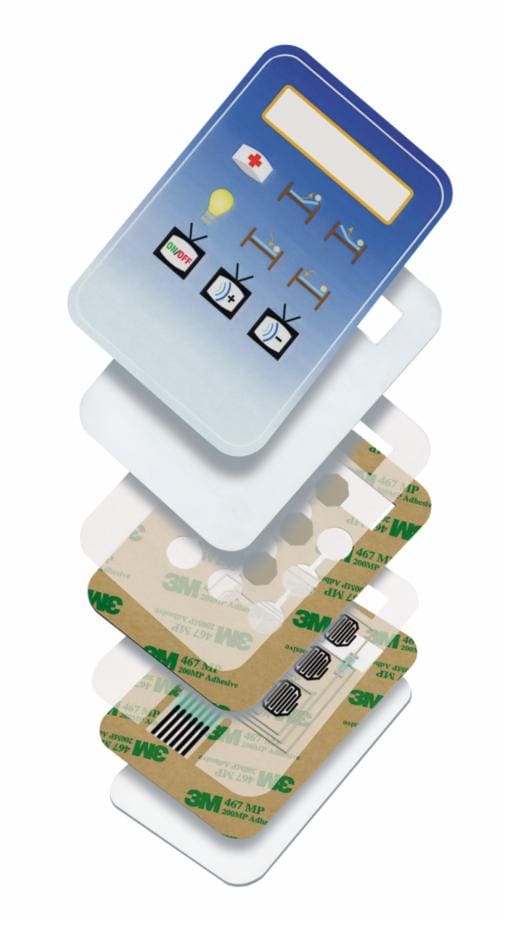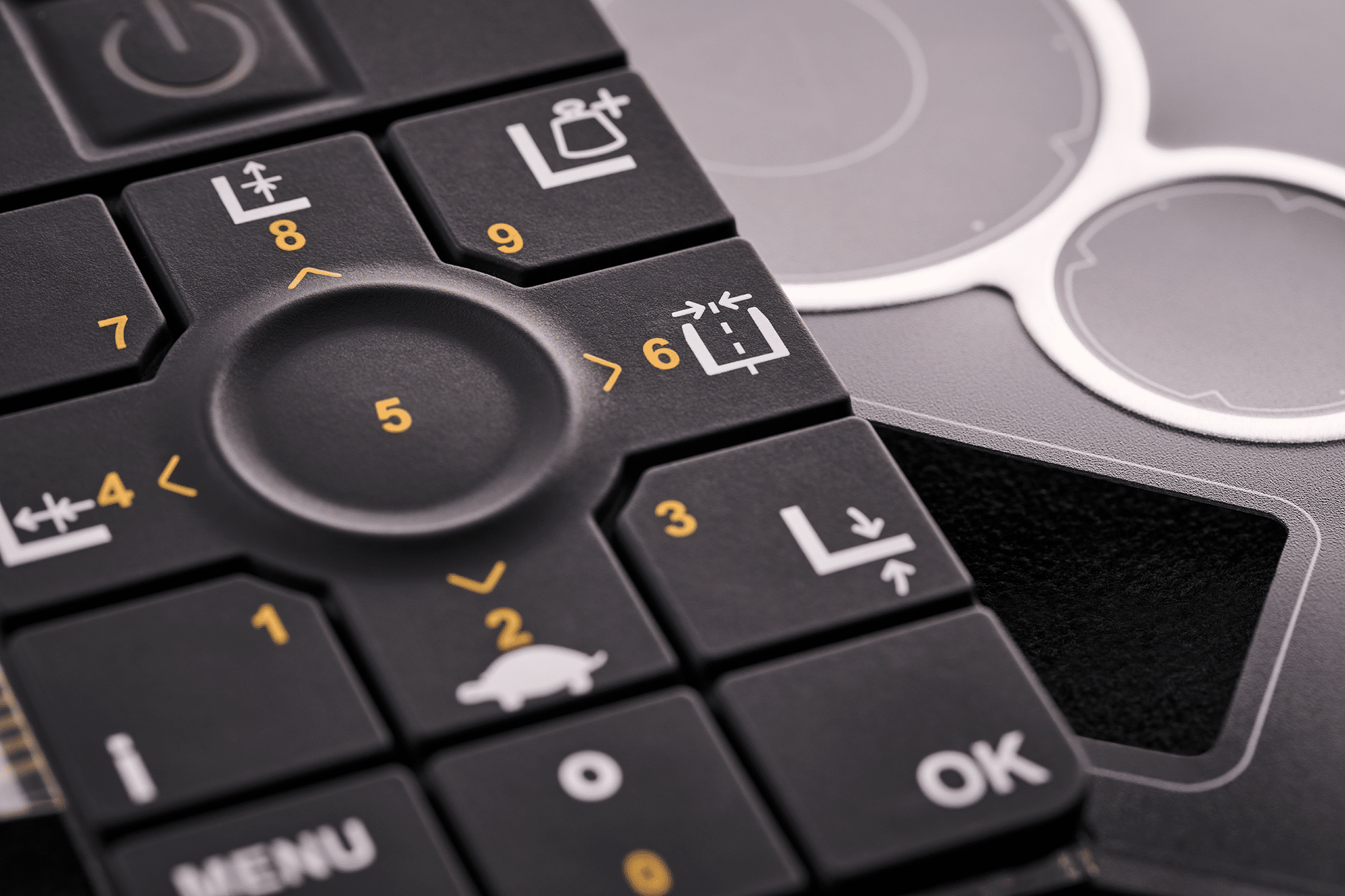Understanding the Value of Membrane Layer Change in Modern Electronics
Membrane layer buttons are integral components in modern-day electronic tools. They provide a mix of capability and style that enhances individual communication. Their durable and lightweight nature makes them ideal for various applications. As industries develop, the demand for personalization and progressed attributes grows. Comprehending how membrane switches over contribute to development discloses their importance fit the future of electronics. What lies in advance for this innovation?
The Fundamentals of Membrane Layer Switch Over Innovation
Usually overlooked, membrane button innovation plays a vital function in the modern-day electronic devices landscape. These gadgets, composed of numerous layers, function as individual interfaces for numerous electronic items, ranging from house devices to medical devices. A normal membrane layer switch contains a visuals overlay, a spacer layer, and a circuit layer, which are thoroughly put together to produce a practical interface.When stress is applied to the overlay, the circuit layer is completed, permitting signals to be transmitted to the tool. This innovation is recognized for its versatility, enabling customization in shape, style, and performance to satisfy particular user demands. Additionally, membrane layer buttons are lightweight and thin, making them suitable for applications where space is a costs. Their longevity and resistance to environmental elements even more enhance their appeal, guaranteeing they can hold up against harsh problems while keeping performance. Generally, membrane layer switch technology is important to producing user-friendly and effective digital tools

Trick Advantages of Membrane Layer Switches
Membrane switches offer a number of vital advantages that make them a favored option in various digital applications. Their style enables for a portable form variable, making it possible for suppliers to develop lightweight and smooth gadgets. Additionally, membrane layer switches are immune to dirt, dampness, and chemicals, which enhances their durability and longevity sought after environments. The responsive feedback given by these buttons can enhance user experience, making them easy and user-friendly to operate.Furthermore, membrane layer switches can be customized with diverse graphics and shades, permitting distinct branding possibilities. The production process is generally cost-efficient, specifically for high-volume manufacturing, as it decreases setting up time and streamlines style. Membrane layer switches require marginal upkeep, adding to reduced total functional expenses. These benefits emphasize their expanding popularity in modern electronic devices, where dependability and user-friendly user interfaces are important.

Applications Across Numerous Industries
The convenience of membrane switches enables their extensive fostering throughout numerous markets. In the clinical area, they are typically utilized in diagnostic equipment and individual surveillance systems, offering a durable user interface immune to contaminants. The vehicle sector utilizes membrane layer switches for control panel controls, enhancing customer experience with smooth layouts that hold up against severe problems. In consumer electronics, they work as control panels for gadgets such as microwaves and coffee makers, supplying an easy to use interface that is very easy to tidy. The aerospace industry utilizes membrane layer switches in cockpit controls, where reliability and space efficiency are extremely important. Furthermore, the commercial sector leverages these switches in machinery and control systems to guarantee durable operation sought after settings. This broad series of applications emphasizes the versatility of membrane switches, making them essential components in improving performance and user interaction across diverse technical landscapes.
Modification and Design Flexibility

Future Trends in Membrane Layer Switch Advancement
Arising fads in membrane switch growth show an expanding emphasis on boosted performance and combination with smart innovations. As consumer demand for a lot more sophisticated digital devices rises, makers are concentrating on creating membrane layer changes that not just continue reading this serve fundamental functional roles yet also include attributes like touch level of sensitivity, backlighting, and haptic feedback.Furthermore, innovations in products are anticipated to improve resilience and ecological resistance, making membrane layer changes suitable for varied applications in sectors such as medical care, automobile, and customer electronic devices. The assimilation of capacitive touch innovation is most likely to become more widespread, enabling sleeker designs and enhanced individual interfaces. membrane switch.Additionally, the rise of the Net of Things (IoT) is motivating the development of membrane layer switches that can communicate wirelessly with various other devices, boosting interconnectivity. Overall, the future of membrane layer switch modern technology appears encouraging, driven by advancement and the search of easy to use options
Often Asked Questions
Exactly How Do Membrane Switches Over Contrast to Traditional Mechanical Buttons?
Membrane layer switches, being a lot more space-efficient and supplying a streamlined style, comparison with conventional mechanical switches that provide responsive comments. The previous often include personalized graphics, while the latter usually assure longevity and reliability in various applications.
What Products Are Commonly Utilized in Membrane Layer Switch Manufacturing?
Membrane switches are normally created making use navigate to this website of products such as polyester, polycarbonate, and printed conductive inks. These products supply versatility, responsiveness, and longevity, making them ideal for numerous applications in electronic tools and interface.
Can Membrane Layer Changes Be Repaired or Recycled?
Membrane layer buttons can often be fixed, particularly if minor problems develop, such as glue failing browse around these guys or surface area damage. However, total reuse is normally limited due to wear and possible degradation of materials over time.
Exactly How Do Ecological Aspects Impact Membrane Switch Over Performance?
Environmental factors, such as temperature level, moisture, and direct exposure to chemicals, significantly influence membrane button performance. Severe problems can cause deterioration, impacting responsiveness and longevity, eventually endangering the functionality of the device in various applications.
What Is the Normal Lifespan of a Membrane Switch over?
The normal life expectancy of a membrane button typically ranges from 1 to 5 million actuations, relying on variables such as usage frequency, environmental problems, and the materials made use of in production, impacting resilience and performance long life. A regular membrane button consists of a graphic overlay, a spacer layer, and a circuit layer, which are meticulously set up to create a practical interface - membrane switch.When pressure is applied to the overlay, the circuit layer is completed, enabling signals to be transferred to the gadget. The responsive feedback provided by these switches can improve individual experience, making them easy and user-friendly to operate.Furthermore, membrane buttons can be customized with varied graphics and colors, enabling for distinct branding chances. As consumer need for extra innovative digital gadgets boosts, producers are focusing on creating membrane layer switches that not only serve standard operational roles however additionally include functions like touch sensitivity, backlighting, and haptic feedback.Furthermore, developments in products are expected to boost durability and ecological resistance, making membrane layer switches over suitable for diverse applications in markets such as health care, automotive, and consumer electronic devices. The combination of capacitive touch technology is most likely to come to be much more prevalent, allowing for sleeker layouts and enhanced individual interfaces.Additionally, the surge of the Net of Things (IoT) is motivating the development of membrane switches over that can communicate wirelessly with various other devices, boosting interconnectivity. Membrane layer switches, being extra space-efficient and offering a smooth layout, contrast with typical mechanical switches that provide responsive feedback